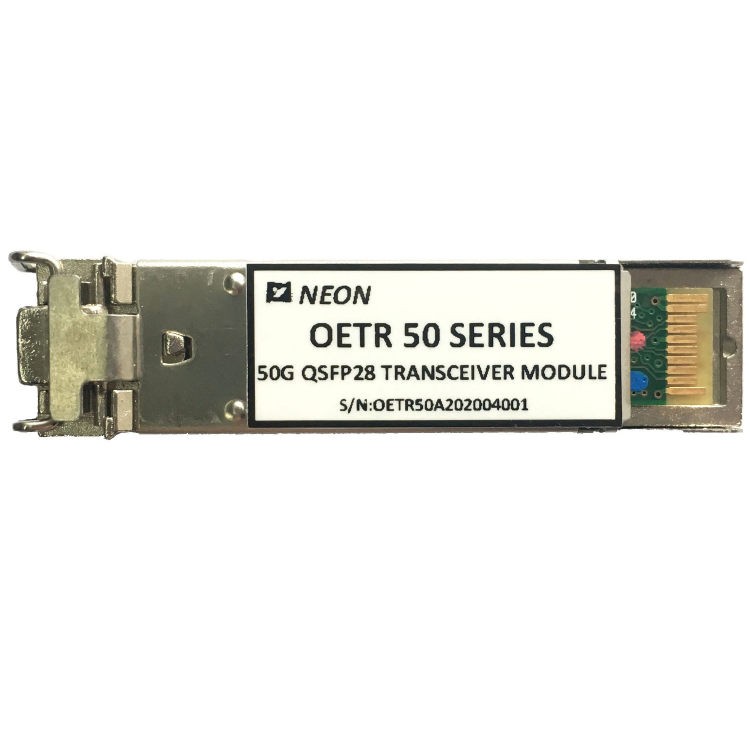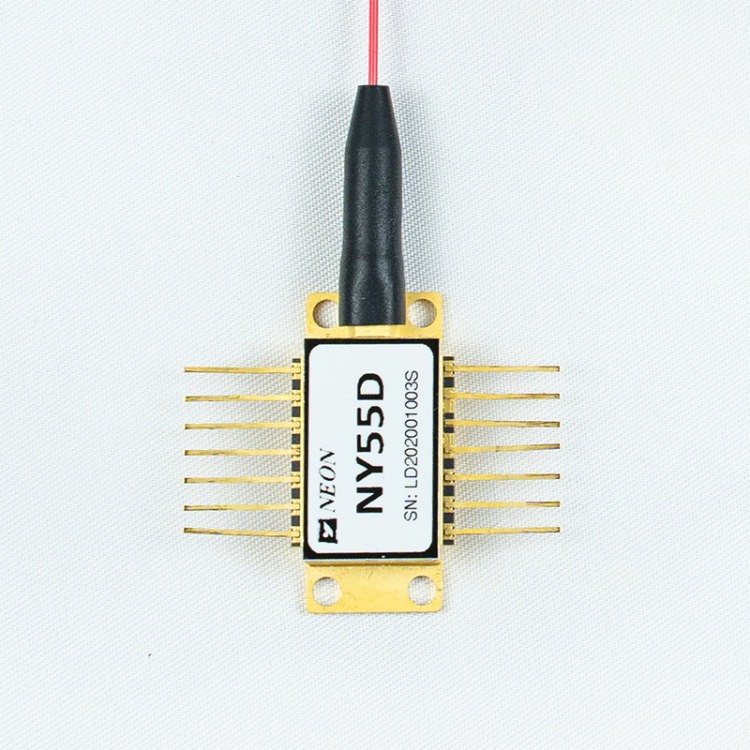The Role of Bidi QSFP28 Transceivers in High-Speed Networking
The ever-growing demand for high-speed data transmission has propelled advancements in networking technologies. At the heart of these advancements lies a crucial component: the transceiver. This article delves into the world of optical transceivers, specifically focusing on Bidi transceivers and QSFP28 transceivers, to provide a clear understanding of their functionalities and applications in modern data networks.

The Power of Light in Data Transmission
A transceiver, short for transmitter-receiver, serves as a bridge between electrical and optical signals in data transmission systems. Network devices like switches, routers, and servers generate electrical signals carrying digital data. However, transmitting these electrical signals over long distances using copper cables becomes inefficient due to signal degradation. Here’s where optical transceivers come into play.
Optical transceivers convert electrical signals into light pulses and vice versa. Light pulses travel through fiber optic cables with minimal signal loss, enabling high-speed data transmission over vast distances. This technology forms the backbone of modern communication networks, supporting the Internet, data centers, and various high-bandwidth applications.
Function and Components of Optical Transceivers
An optical transceiver functions by converting electrical signals transmitted by network devices into light pulses suitable for travel through fiber optic cables, and vice versa. To achieve this conversion, three key components work in unison:
- Laser Diode or Vertical-Cavity Surface-Emitting Laser (VCSEL): This light source acts as the core component for transmitting data. When an electrical signal arrives at the transceiver, the laser diode or VCSEL converts it into a light pulse with a specific wavelength. The selection of wavelength depends on factors like transmission distance and data rate requirements. VCSELs are generally preferred for shorter distances due to their lower power consumption and simpler construction compared to laser diodes.
- Photodetector: This component resides at the receiving end of the transceiver. Its primary function is to convert the incoming light pulses back into electrical signals that the network device can understand and process. The photodetector achieves this by absorbing the photons (light particles) within the light pulse, generating an electrical current proportional to the received light intensity.
- Electrical Circuitry: The electrical circuitry within the transceiver plays a crucial role in both transmission and reception. During transmission, the circuitry takes the electrical signal from the network device and prepares it for the laser diode or VCSEL. This preparation might involve amplifying the signal strength or converting it into a format suitable for driving the light source. On the receiving end, the circuitry amplifies the weak electrical current generated by the photodetector. It might also perform additional signal conditioning tasks like filtering or equalization to ensure the recovered electrical signal is clean and error-free.

Additional Points
- Different types of optical transceivers, like SFP, SFP+, XFP, and QSFP28, utilize these core components but may vary in their specific design, packaging, and capabilities. These variations cater to different data rate requirements, form factors for compatibility with network devices, and transmission distances.
- Wavelength selection plays a crucial role in optical transceiver performance. Common wavelengths used in optical transceivers include 850 nm, 1310 nm, and 1550 nm. The optimal wavelength choice depends on factors like fiber optic cable type and desired transmission distance.
Understanding QSFP28 Transceiver: Form, Function, and Applications
The Quad Small Form-factor Pluggable (QSFP28) transceiver is a standardized, hot-swappable module designed specifically for high-density data center applications. Here’s a detailed breakdown of its form factor, functionalities, and typical uses:
1. Compact Form Factor for Increased Density
The QSFP28 transceiver adheres to a compact size specification, enabling network devices like switches and routers to accommodate multiple modules within a single unit. This translates to significant advantages for data centers:
- Increased port density: By housing more transceivers within a single switch or router, QSFP28 allows for a higher number of network connections compared to traditional transceivers with larger footprints.
- Improved space utilization: The compact size of QSFP28 transceivers helps optimize valuable rack space within data centers, fostering more efficient use of physical resources.
2. Multitude of Data Rate Capabilities
The QSF28 transceiver boasts versatility by supporting a range of data rates. It can be employed for various applications, including:
- 10 Gigabit Ethernet: This is the most basic data rate supported by QSFP28 transceivers. It caters to situations requiring reliable data transfer at a moderate speed.
- 40 Gigabit Ethernet: This is a commonly used data rate in modern data centers. QSFP28 transceivers can achieve 40 Gigabit Ethernet through various techniques, such as utilizing four internal channels operating at 10 Gigabit Ethernet each.
- 100 Gigabit Ethernet: This is the highest data rate achievable with QSFP28 transceivers. It caters to high-bandwidth applications requiring extremely fast data transfer speeds. The technology employed within a 100 Gigabit Ethernet QSFP28 transceiver might involve advanced modulation techniques to pack more data onto the light pulses.
It’s important to note that the specific data rate a QSFP28 transceiver supports depends on the underlying technology it utilizes. Different QSFP28 transceiver models might achieve the same data rate through distinct technical approaches.

BiDi Transceivers: A Single Strand for Two-Way Communication
Bi-directional (BiDi) transceivers represent a significant innovation in the realm of optical transceivers. Unlike their conventional counterparts that rely on separate fiber optic cables for transmitting and receiving data, BiDi transceivers achieve two-way communication over a single strand of fiber. This functionality hinges on a key principle: utilizing distinct wavelengths of light for transmission and reception.
Here’s a deeper dive into how BiDi transceivers accomplish this feat:
- Wavelength Differentiation: BiDi transceivers employ different wavelengths of light for transmitting and receiving data. A common example involves transmitting data at a wavelength of 1310 nanometers (nm) and receiving data at a wavelength of 1270 nm. This distinction allows both signals to coexist on the same fiber optic cable without interference.
- Wavelength-Division Multiplexing (WDM) Filters: To ensure the separation of transmit and receive signals, BiDi transceivers incorporate WDM filters. These specialized filters function like traffic lights for light wavelengths. The transmit WDM filter allows the outgoing signal at its designated wavelength (e.g., 1310 nm) to pass through the fiber optic cable while blocking the incoming receive wavelength (e.g., 1270 nm). Conversely, the receive WDM filter permits only the desired receive wavelength (1270 nm) to reach the photodetector within the transceiver, effectively filtering out the transmitted wavelength (1310 nm).
The benefits of utilizing BiDi transceivers are multifaceted:
- Reduced Fiber Usage: By enabling two-way communication on a single fiber, BiDi transceivers cut fiber cable requirements in half. This translates to significant cost savings on fiber optic cable infrastructure within data centers.
- Simplified Deployment and Maintenance: The need for only one fiber optic cable per connection significantly streamlines network deployment and maintenance processes. This simplified cabling infrastructure reduces clutter and eases network management tasks.
Applications of Bidi QSFP28 Transceivers
The combination of QSFP28’s high-density form factor and BiDi’s single-fiber functionality creates a powerful solution for data center applications. BiDi QSFP28 transceivers are particularly well-suited for short-reach interconnects within data centers, where they can establish high-bandwidth connections between switches, servers, and storage devices.
Here’s a closer look at some of the key applications of BiDi QSFP28 transceivers:
- High-Performance Computing (HPC): HPC environments require high-speed, low-latency data transfer between compute nodes. BiDi QSFP28 transceivers enable cost-effective, high-density connections within HPC clusters, facilitating efficient communication and data exchange between processing units.
- Cloud Computing: Cloud data centers house a vast number of servers that communicate intensively. BiDi QSFP28 transceivers provide a cost-efficient and space-saving solution for inter-rack and top-of-rack connections within cloud data centers, supporting the dynamic scaling and resource allocation required for cloud services.
- Enterprise Networks: BiDi QSFP28 transceivers can be beneficial for core-to-distribution and core-to-access connections within enterprise networks. They offer a cost-effective way to increase bandwidth between network switches while reducing cable clutter, simplifying network management.
- Storage Area Networks (SANs): SANs provide high-speed connectivity for storage devices like disk arrays. BiDi QSFP28 transceivers can be used to establish high-bandwidth connections between SAN switches and storage systems, enabling efficient data access and storage consolidation.

Conclusion
Bidi transceivers, along with QSFP28 transceivers and the broader family of optical transceivers, play an undeniably critical role in modern data transmission. They form the backbone of high-speed networks, enabling the information flow that underpins today’s internet, cloud computing, and various data-driven applications.
As technology continues to evolve, we can expect further advancements in optical transceivers, pushing the boundaries of data rates, reach, and form factors. These advancements will ensure that optical transceivers remain the vital link for seamless and efficient data transmission in the ever-expanding information age.








